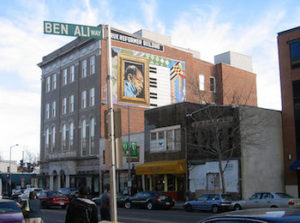
the True Reformers Building
On this date in 1903, The True Reformer Building in Washington D.C. was dedicated. Built by the Grand Fountain of the United Order of True Reformers, it was the first building in America to be designed, financed, built, and owned by the African American community after Reconstruction. It was designed by John A. Lankford, the city's first registered African American architect, who went on to national prominence as the architect for African Methodist Episcopal churches across the country. In 1906, Lankford said, "being in Washington, it stands out to the civilized world as an example of what the Negro can do and has done with his brain, skill, and money."
Fraternal and mutual benefit organizations, such as the True Reformers and the Knights of Pythias, who later owned the building, were important organizations for Black self-help and cooperation at the turn of the century. Discriminated against by White companies, Black Americans turned to these mutual benefit societies for insurance as well as other financial and social needs.
Over the years, the building has housed numerous civic and cultural organizations, among them are the Washington Conservancy, the DC Chapter of the National Negro Business League, the Boys Club of the Metropolitan Police of the District of Columbia, and the First Separate Battalion, an African American branch of the DC National Guard who drilled in the building's basement before going to the Arizona border during the Mexican-American crisis of 1916 and to Europe to 1917. It was also used for various events, celebrations, and concerts, including performances by Duke Ellington.
The building was listed on the National Register of Historic Places in 1989. The Public Welfare Foundation purchased the True Reformer Building in 1999 and moved into the building in February 2001. The True Reformer Building symbolizes the African American community's contribution to culture and architecture at a time when public and private Washington, D.C. was being revitalized.
The African American Desk Reference
Schomburg Center for Research in Black Culture
Copyright 1999 The Stonesong Press Inc. and
The New York Public Library, John Wiley & Sons, Inc. Pub.
ISBN 0-471-23924-0
